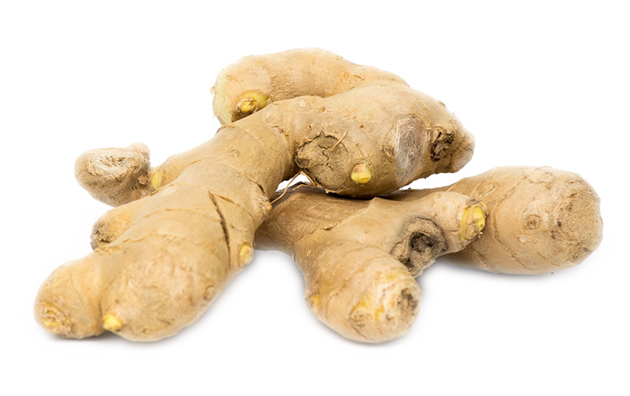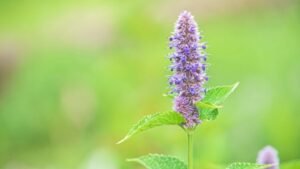| ✨Hey there! This post may contain affiliate links, meaning we earn a commission if you make a purchase through our links, at no cost to you. Please read our disclosures for more info. |
Table of Contents
Top Seven Most Useful Herbs in an Apothecary
Top Seven Most Useful Herbs in an Apothecary
The Top 7 most useful herbs on our list for an apothecary include Arnica, Chamomile, Parsley, Turmeric, Lavender, Peppermint, and Ginger. These plants have outstanding healing properties and can also be grown fairly easily.
All of these herbs have varying levels of effectiveness for different purposes. For example, Lavender is perfect for topical remedies because it has anti-septic and skin healing properties. While Arnica is more effective for joint pain relief than Chamomile because it contains higher levels of the ingredient helenalin that reduces swelling in the muscles.
The Use of Herbs
Why herbs are useful in apothecaries is primarily because the natural ingredients found in herbs offer customers better and less invasive treatment options that can be used for long-term relief.
There are four main reasons why herbs are so effective in apothecaries treatments.
In particular, the fact that herbs can be used effectively in both topical and internal treatments is likely the main reason why they are so popular in apothecary stores.
The fact that herbs have natural ingredients rather than manmade chemicals means that customers can be sure that what they are buying is both safe and completely natural. The fact that the ingredients in herbs are natural means that their effects are effective for long-term relief. Many pharmaceutical alternatives can have heavy side effects after prolonged use.
The fact that herbs can be taken internally in the form of teas, tinctures, and tonics also makes them very useful because they can be used for a variety of different purposes including treating insomnia, stress, and digestive problems as well as joint pain. It also makes them much more beneficial to anyone without children who does not want to expose their children to harmful chemicals that are frequently found in manmade treatments.
Finally, the fact that herbs have many different uses makes them even more valuable than other treatments because they provide customers with additional benefits such as calming moods or improving appetite by lowering levels of stress. The Top 7 most useful herbs in an apothecary include:

Herbs – Arnica
The first herb in this list is Arnica, whose name means “little eagle”. Arnica has historically been used as a topical treatment for bruises and various injuries. It may also be helpful in reducing swelling and easing pain and discomfort from arthritis or muscle aches.
The genus “Arnica” is derived from the Greek word “arnikon” which means “lamb’s ear.” The plant contains compounds called sesquiterpene lactones that produce an effect of vasodilation and anti-inflammatory properties that may be helpful in treating inflammation, swelling, pain, and muscle damage.
Compounds called sesquiterpene lactones are also found in other plants such as helichrysum. These substances have anti-inflammatory effects that are believed to help ease muscle pain, joint aches, and inflammatory conditions. Studies suggest that taking arnica tablets or applying it directly to the skin may reduce swelling and inflammation caused by minor injuries.
Another compound known as Helenalin may act to reduce swelling. A 2005 study found that the presence of helenalin can reduce muscle contractions that may be associated with acute muscle injury and that it was more effective in reducing muscle contraction than other commercially available anti-inflammatory agents.
Herbs – Chamomile
Chamomile has been a part of global cultures for centuries. Egyptians, Romans, and Greeks all used chamomile for medicinal purposes. Ancient Egyptians used it as a way to treat fevers, inflammation, and digestive problems. The Romans believed chamomile could relieve earaches, eye infections, and menstrual cramps.
Chamomile is an effective herb for those looking for natural relief from anxiety or insomnia. Chamomile contains compounds called flavonoids which have sedative and anti-inflammatory properties. It is believed to be effective in reducing anxiety, decreasing stress, and promoting sleep. Chamomile also contains a compound called apigenin that has been shown to promote relaxation by inhibiting the neurotransmitters epinephrine and norepinephrine from binding to receptors.
Chamomile is a herb that can be brewed into a tea to help with stomach cramps and other gastrointestinal issues. It is a perennial plant that is considered safe for human consumption, but it should not be taken in large quantities or over an extended period of time.
It also has many other uses including as a natural dye for fabric and hair, as an air freshener, cooking spice, or even as an animal repellent.
Parsley
Parsley is an herb with curly green leaves that we typically use as a garnish in food, but it can also be used as a cooking ingredient.
It’s a good source of vitamin K and vitamin C which help in blood clotting and boosting the immune system respectively. Parsley is also loaded with nutrients like iron, potassium, calcium, manganese, magnesium, and folate.
In recent years parsley has been recognized for its ability to decrease inflammation throughout the body. Parsley is full of essential oils like eugenol which are antioxidants that help reduce inflammation in the airways by making them less reactive to allergens or irritants.
Eugenol also has anti-bacterial properties that may help fight infection.
Parsley is a very versatile herb, so you can use it in your cooking to season food or drink herbal tea made from the leaves. You can even make parsley-infused vinegar which can be used as a salad dressing for salads. Many commercial products have been created with the help of parsley such as toothpaste, mouthwashes, and cosmetics.
Turmeric
With its golden hue, turmeric is like nature’s version of aspirin. It is in fact reduced to make the aspirin. Turmeric is one of the most valuable spices in the world. This spice has been used for centuries and in some cultures, it is considered a necessity.
Turmeric is a common ingredient in dishes from across Asia, the Middle East, North Africa, and Europe. It has been used to treat various health conditions for years and its medicinal properties are only now being studied more thoroughly. Studies have found that turmeric may be helpful for people suffering from Alzheimer’s disease, depression, arthritis, or even cancer.
Turmeric can be consumed orally as a food additive or as a pill supplement.
Lavender
Lavender is a popular herb that has been used for centuries to help with anxiety, stress, insomnia, and depression. It can also be used to help dementia patients who are experiencing restlessness or agitation.
Lavender essential oil is the most commonly used form of lavender. This type of lavender is usually diluted in carrier oils such as olive oil or almond oil. It can also be mixed with water and sprayed on the skin using a spray bottle. Lavender can also be taken as an oral supplement in pill form.
There are many ways that lavender can be helpful for different health conditions, but it shouldn’t replace medications prescribed by doctors for these conditions.
Peppermint
A notoriously easy to grow herb, peppermint should be in everyone’s garden (preferably contained). The perennial weed is one of the most delicious and exciting herbs, hence the reason it is the go-to holiday scent and flavor. Peppermint is an herb with many uses. It can be used for cooking, medicine, decoration, and more. Peppermint tastes great and is very easy to grow.
Peppermint is a herb that has many uses. It tastes good and it’s very easy to grow. There are many different ways that peppermint can be incorporated into your life such as as a food additive, medicine, or decoration.

Ginger
A magical rhizome indeed, ginger can be used in so many ways; steeped in a tea, sautéed with some veggies, its one of the most versatile spices in the world. It can be used to make tea or it can be cooked with some vegetables and eaten as a side dish. You can also make ginger ale! It has been used for its medicinal properties for thousands of years.
Ginger contains a substance called zingibain that soothes irritated tissues throughout the body by blocking pain receptors in the body and reducing inflammation caused by arthritis, asthma, and allergy symptoms. People who have cancer-fighting cells in their bodies are also helped by zingibain, because the cells are able to better find and destroy cancerous tumors in your body.
Ginger also has some very effective anti-viral properties that can help fight colds.
You can purchase ginger in pill form as a supplement or you can make it yourself.
The rhizome that’s used is the same, but it has different purposes depending on how it’s used. Ginger is a plant with leafy stems and yellowish-green flowers. The ginger spice comes from the root of the plant. Ginger is a popular spice all over the world because it tastes great, has medicinal properties, and can be used as an ingredient in many dishes. This makes it popular among chefs as well as restaurants, which often have it on their menus for people to enjoy.




